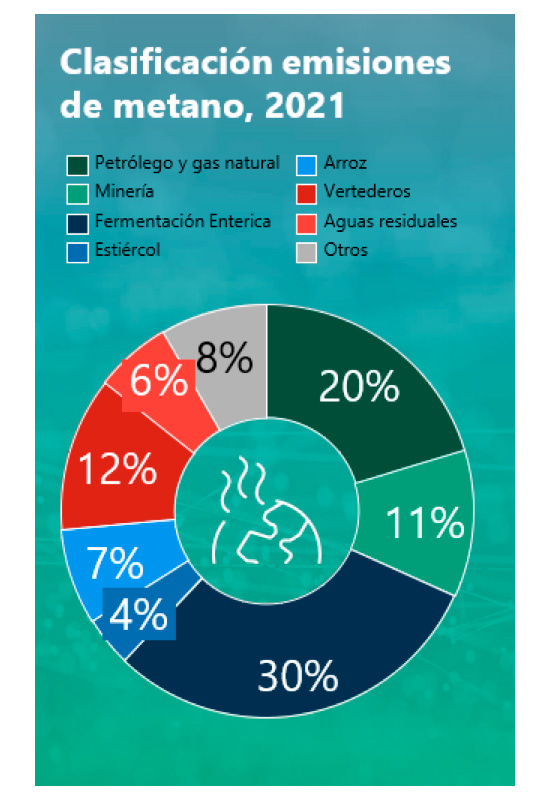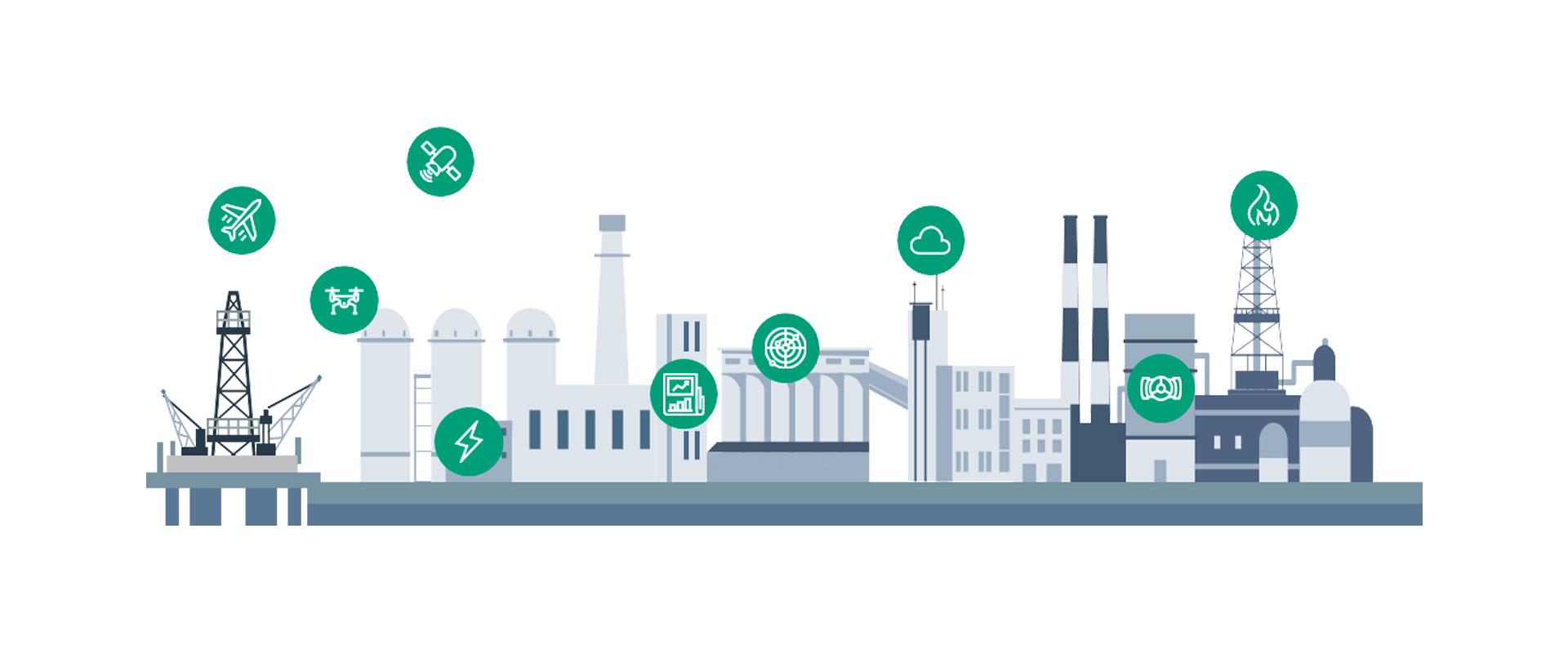Methane Management
Methane is a critical greenhouse gas with a huge impact on global warming in the short term.
What are methane emissions?
Methane is a critical greenhouse gas with an outsized impact in the near-term global warming, absorbing around 84 times more energy than carbon dioxide in a 20-year period (GWP-20) and around 28 times more in a 100 year one (GWP-100).
Although carbon dioxide emissions command a large amount of the attention, anthropogenic methane emissions (ones related to human activity) are the second-largest driver of global warming and have risen by about 25 percent in the past 20 years, with some estimates indicating that it accounts for ~30% of the temperature increase from preindustrial levels.
Where do anthropogenic methane emissions come from and what should we do?
Anthropogenic methane emissions account for around 60% of total methane emissions. Within the anthropogenic emissions, over 40% come from the agricultural sector, roughly one third come from the energy sector, and almost 20% are related to waste.
Within the Oil & Gas sector, estimations place 43% of emissions in oil production, 31% in natural gas production and the remaining 19% in natural gas transport.
Since methane stays in the atmosphere for about a decade, compared with the centuries for carbon dioxide, but with a significantly higher global warming potential, acting fast to detect and mitigate existing emissions, and putting in place the mechanisms to prevent future ones, can result in an important near-term reduction in the pace of global warming.


What are the public and the private sectors around the world doing?
The EU and USA have signed an agreement for the reduction of methane emissions, and the EU has submitted in 2021 a proposal with that objective. This includes specific requirements for the measurement, reporting and verification of methane emissions in energy infrastructure, and the establishment of standards to allow natural gas imports.
In parallel, the Oil & Gas sector has proactively reacted to this issue, in the form of industry-wide collaborations to address it. Examples of such collaborations are the Oil & Gas Climate Initiative (OGCI), where some of the most relevant Oil & Gas players have established an objective to achieve a methane emissions intensity of their activity of 0.2% by 2025. On the other hand, the Oil & Gas Methane Partnership (OGMP), includes over 60 players who represent +30% of global oil and gas production, has established a methodology and reporting standard (OGMP 2.0) that is increasingly becoming the norm in the sector. Técnicas Reunidas and track are ready to support the Oil & Gas sector in its decarbonization journey.
What technologies will enable methane emissions reductions?
The pathway to reduce methane emissions in the energy sector start by having a thorough understanding of the level of emissions and their sources. There are multiple technologies to measure and monitor the emissions, whose applicability and convenience vary according to three factors: measurement resolution (i.e., surface area measured, going from km2 to m2), emissions intensity granularity (i.e., from CH4 tons to CH4 kg per hour), and the frequency of measurement (going from continuous monitoring to once-per-year measurement). Some of the key technologies include:
- Satellite image measurements and image analytics for methane emissions
- Airplane / helicopter imaging technologies
- Drones and Unmanned Aircraft Systems
- Mobile / man-carried devices
- Fixed sensors in the infrastructure
There is no single technology that will provide both a comprehensive and granular emissions monitoring solution for energy companies.
track offers the full suite of options to measure, monitor and mitigate the methane emissions in our clients’ energy infrastructure.


What is our value proposition?
In track we help our clients tackle their methane emissions and jointly work to:
- Achieve Oil & Gas Methane Partnership OGMP 2.0 Gold Standard, the leading methane emissions monitoring framework
- Constantly monitor and measure assets’ emissions to certify emissions reporting values for our clients’ production
- Provide LDAR (leakage detection and repair) services to facilities so our clients don’t have to worry about leakages, and increase the asset’s output, enabling monetization of the additional methane
- Guide them to achieve their methane emissions goals by building a detailed roadmap to reduce them and accompanying them in the process
Provide them expert advice along the full value chain of methane emissions, including a comprehensive view of available monitoring and mitigation technologies
